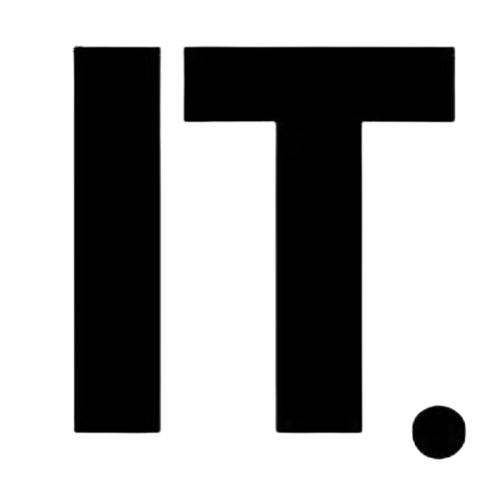Contents
Understanding Your Face Shape
Before finding the frame styles that might best flatter your face, you need to identify your face shape. The right frames can improve your appearance, balance out your features and complement your face shape. Here is how to identify your face shape:
Oval: Length exceeds the width, and the width of the forehead is wider than that of the chin with a rounded jawline.
Round: Rounder shorter facial length with no angles and fuller cheeks.
Square: A square face features a broad forehead, wide cheekbones and jawline.
Heart Shape Face: Wide forehead and cheekbones to a small, narrow chin.
Diamond Face: Your forehead and jawline are narrow, your cheekbones wide.
Oblong Face: It is longer than it is wide, with a straight cheek line and sometimes also a long nose.
Pull your hair by tightly against the scalp, look into a mirror and trace an outline of your face with a washable marker onto the glass. Or see Titaneyeplus for a comprehensive breakdown.
Best Glasses for Every Shape Face
Oval Face
Best Frames: Any rectangular or cat-eye or round frames. Bold geometric shapes add definition.
Skip: Too-narrow or overly oversized frames.
Why It Works: Rectangular frames bring structure; softer cat-eye or round frames play down the face’s natural symmetry.
Round Face
Best Frames: Square, rectangular or angular frames. Browline or Wayfarer looks are also good.
Avoid: Small, round frames that accentuate the curves of the face.
Why It Works: Angular frames contrast with and angularize features, leading to an elongating appearance.
Square Face
Best Frames: Round, oval or cat-eye. Rimless or semi-rimless styles are best.
Avoid: Boxy or angle frames that draw attention to the jawline.
Why It Works: Soft curves play against the face’s natural angles for structure with ease.
Heart-Shaped Face
Best Frames: Oval, round or bottom-heavy frames (think aviators). Thin, light-colored frames are ideal.
PASS: Too large or heavy frames that distract from the forehead.
Why It Works: When the bottom of a frame widens out over the lower face, it creates balance.
Diamond Face
Best Frames: Oval, rimless or cat eye frames. Horn-rimmed or browline shapes are also flattering.
Avoid: Short, narrow frames that elongate the face.
Why It Works: Soft, rounded frames accentuate the cheekbones while also offsetting a broad forehead and jaw.
Oblong Face
Best Frames: Oversized, round or square frames. Broad temples or double bridges bring a sense of width.
Not: Tight, tiny frames that stretch the face out.
Why It Works: Wide lens frames help the face appear shorter and more balanced.
To get a sense of what might look best, see Lenskart to pair frames with your features.
Parikhsingh recommends selecting glasses according to how you will use them. Besides the looks, glasses were supposed to serve your needs. Here’s how to decide based on lifestyle and vision needs:
Prescription Glasses for Everyday Wear
If you simply need a pair of glasses for daily tasks such as reading, driving or working, then comfort and durability should be your priority.
Lens Options: Single-vision lenses for nearsighted or farsighted. Anti-reflective coatings cut down on glare, and scratch-resistant coatings add life to your lenses.
Frame Material: Ultralight titanium or acetate for all day comfort.
Tip: Look into transition lenses that darken when exposed to the sun for a seamless indoor-outdoor flow.
Computer Glasses
Lens Options: Blue light-blocking or yellow-tinted lenses that can improve contrast.
Frame Styles: Slim, large frame to allow a wider vision.
Bonus: If you plan to work in them for hours on end, then look for glasses with adjustable nose pads for a comfortable fit.
Reading Glasses
Lens Options: Magnification strengths available are +1.00, +1.25, +1.50, +1.75, +2.00 and up to 3.00. Bifocals or progressives pair distance and near vision.
Frame Design: Half-moon or slim line frame designs for easy on-and-off use.
Tip: Stash a pair or two in your desk drawer, on the bedside table.
Sports Glasses
Lens Choices: Polycarbonate lenses for impact resistance. Durable and polycarbonate lenses reducing glare perfect for outdoor sports.
Frame Style: Full-wraps offer a snug fit. Rubberized temples prevent slipping.
Tip: Opt for adjustable straps if you plan on high-impact activities such as biking or skiing.
Sunglasses
Lens Options: Polarized lenses to help reduce glare. Gradient lenses that suit both bright and low light conditions.
Face Shape Frame Styles: Aviators, wayfarers or oversized frames appropriate to your face shape.
Tip: Eye safety is all about getting 100% UVA/UVB on your sunglasses.
For more information on lens technology, visit Essilor.
Additional Tips for Choosing Glasses
Frame Color: Match your skin tone and hair color. Warm tones (red, gold) look good on warm skin and cool ones (blue, black) flatter cooler skin.
Try Before You Buy: Employ virtual try-on tools from retailers like GlassesUSA, or step into a store for your hands-on fit.
Fit is Key: Make sure frames don’t pinch at your nose or slide down it. Fit is improved with adjustable nose pads and temple tips.
Budget Options: Cheap eyewear companies like EyeBuyDirect offer stylish frames for as little as $10.
Next read: Ways to Keep Your Glasses Safe When You Play Sports
FAQs About Choosing Glasses
How do I know if my glasses fit correctly?
Good-fitting glasses feel comfortable on your nose — not so tight they pinch, and not so loose that they slide around. Horse to an original pair of insert, glasses ride on the eyes in lens need and gentle ear pressure. If it feels tight or loose, go see an optician to have them adjusted.
Can I use the same reader for both reading and computer work?
It depends. Reading glasses are tuned for close up visual tasks (12-14 inches) whereas computer glasses optimal working distance is intermediate (20-26 inch). You can use a pair of progressives or bifocals to achieve both goals at once.
Are expensive frames worth it?
Pricey frames often feature superior materials — say, titanium or an alloy thereof — and long-lasting construction, but there are also plenty of inexpensive styles at reliable vendors that look as good as they wear. Cheap out on frame cost, but not price of lens.
How often will I need to renew my glasses?
Replace glasses every 1-2 years or after a prescription change. If the lenses become scratched, or if clout frames are broken: replace them prior to and ensure clear vision.
Is it okay to choose glasses online without trying them on beforehand?
It does, yes. There are a lot of virtual try-on options online and return policies tend to be more generous than when you’re shopping in person. Please make sure your PD (Pupillary Distance) is in the range of 58-78 for accurate measurement and fit.
Picking out the right glasses is a mixture of science and fashion. Once you do that, by bearing in mind your face shape and needs — be it for everyday use, at work, while taking part in sports or to shield eyes from the sun — you can pick out a pair that flatters your features and enhances how you see. Find a frame that fits your lifestyle online, talk to opticians and visit a few good retailers. A pair of frames that are exactly right for you — and we are not talking only about the fit here — can make your vision sharper, yes, but also imbue a sense of confidence so that you feel ready to take on the world.
Disclaimer: This guide is for informational purposes only. Consult a licensed eye care professional for advice on glasses, prescriptions, and vision needs.





